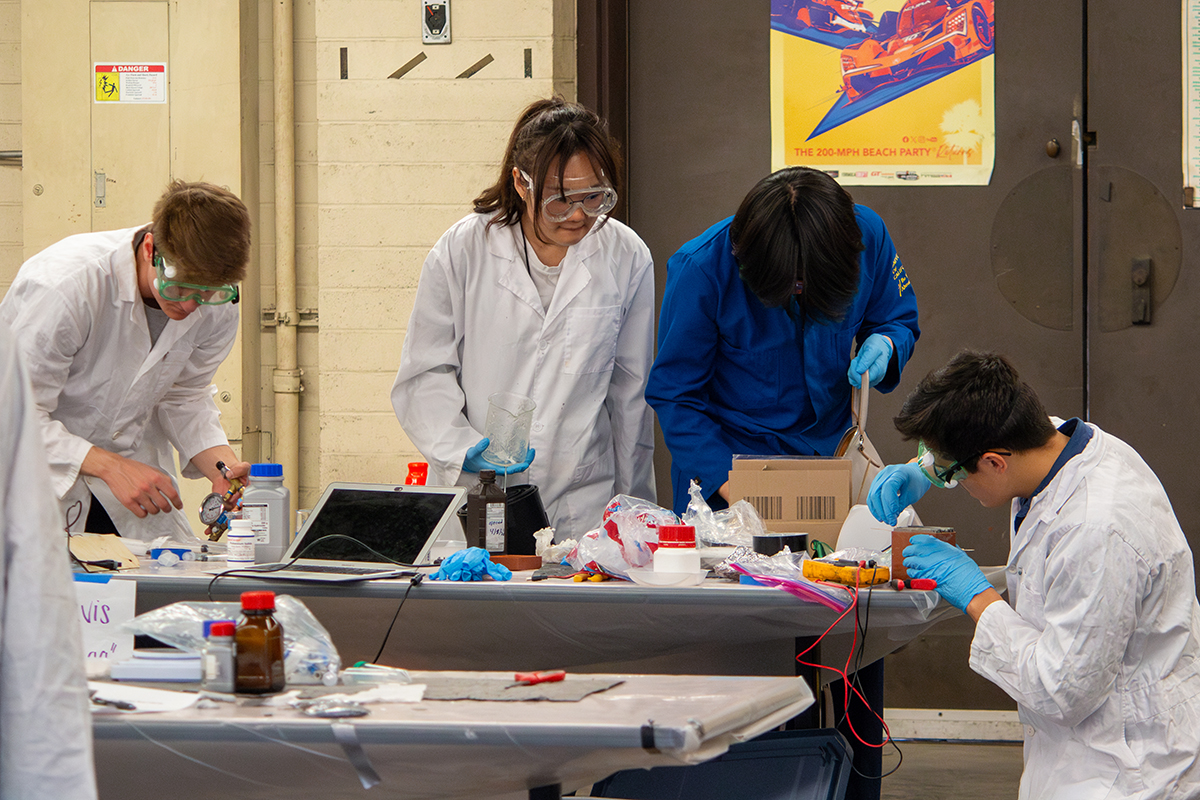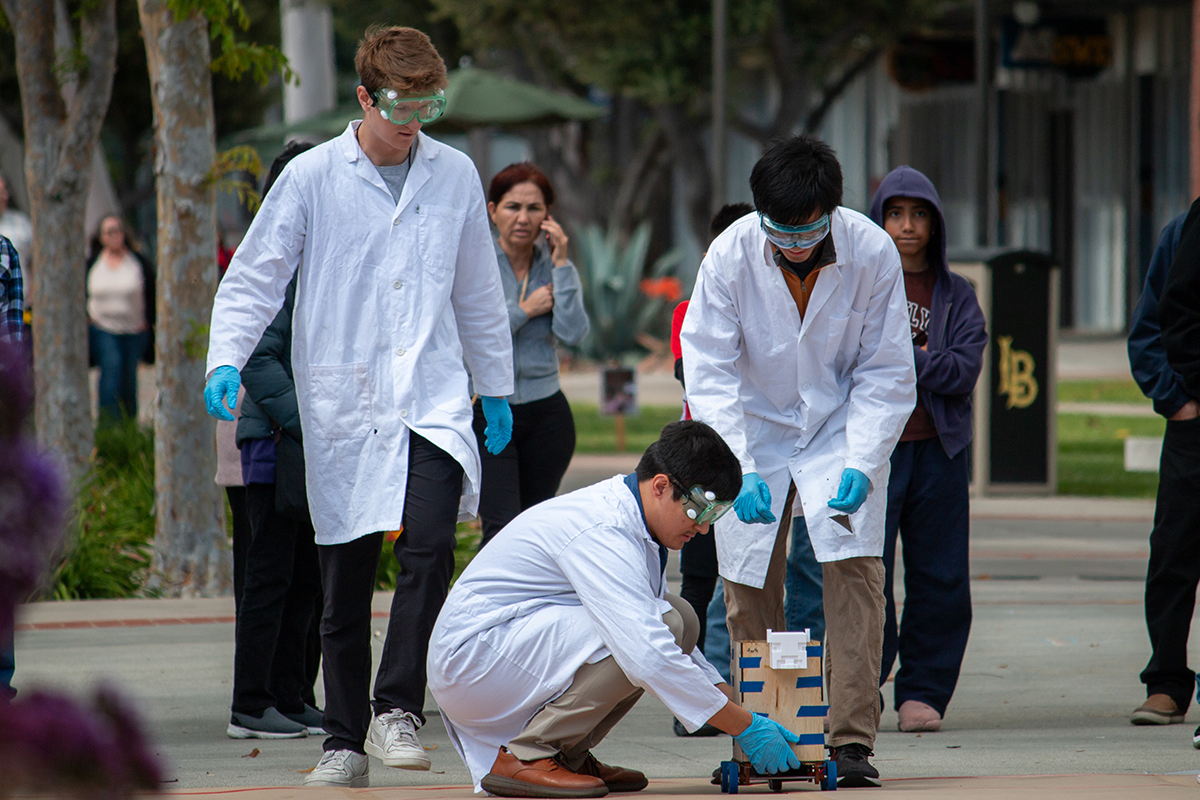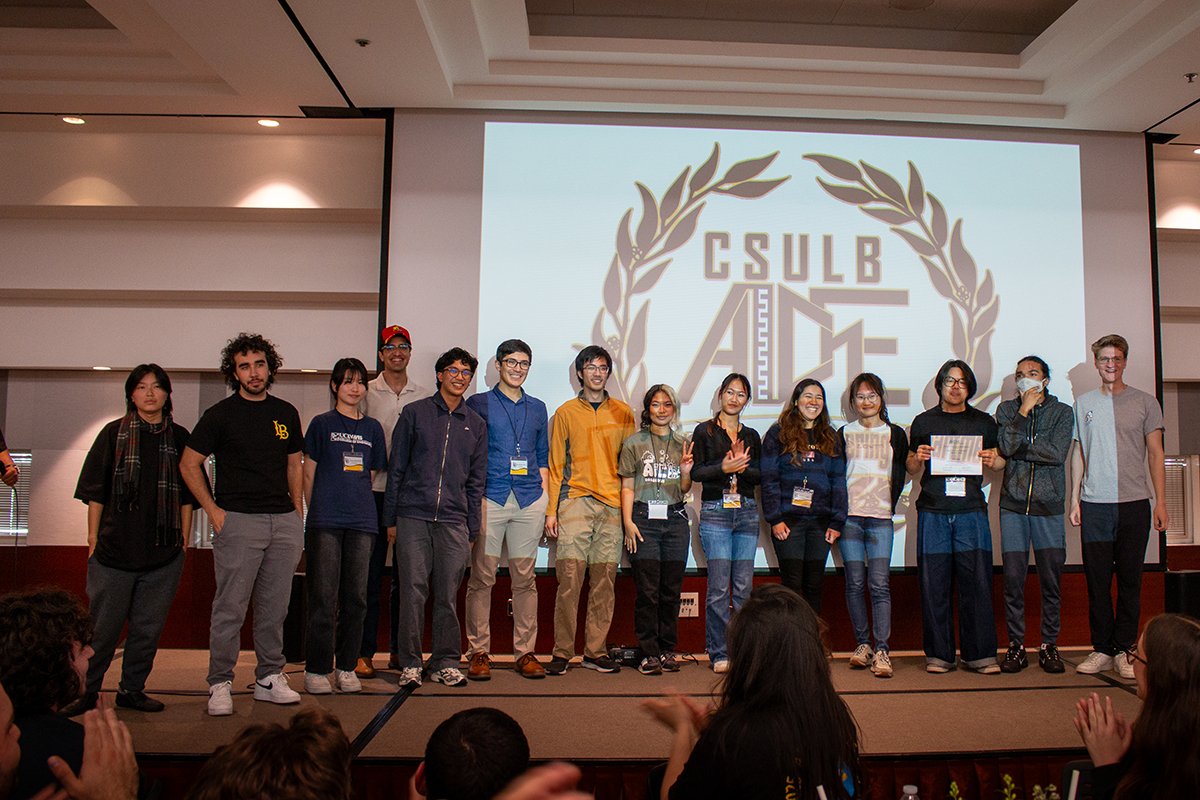
Chem-E-Car Gains Momentum
Revived after a Covid-induced hiatus, the chemical engineering team navigates bumpy roads back to competition
When Clarke Leung entered the University of California, Davis, as a first-year student in 2022, he was excited about joining Chem-E-Car, a chemical engineering team that participates in a national competition to build a shoebox-sized car powered by a chemical reaction.
The team, however, was on an indefinite hiatus because of Covid-19. Leung and fellow first-year Kyle Le were hopeful that they could help get Chem-E-Car, which is part of the American Institute of Chemical Engineers, or AIChE, running again.
"There were maybe 10 people that first year," said Leung. "We were trying to figure out how to do things."
Now, as third-year chemical engineering majors, Leung and Le are leading the Chem-E-Car team. Despite a bumpy road, the team is gaining momentum, learning lessons along the way and ready to put their best foot forward at next year's competition.
Driving Blind Together

For the 2024-25 school year, Leung's role was lead for the power team, meaning he oversaw all the elements for the chemical reaction that would power the vehicle, and the captain for the whole team. Le was lead for the chassis team, overseeing the structure of the car.
While they had both been on the team for two previous years, they had major hurdles to overcome as new leadership: namely, a lack of organization and no real guides to help steer them in the right direction.
"After last year, there was a huge leadership shift, and now we're filling in their shoes," said Le. "It's been a lot of figuring things out, in terms of technical stuff, logistics, even finance."
In the first year of its return, the team didn't compete in the AIChE Western Student Regional Conference, where the Chem-E-Car competition takes place. Last year, they competed and took fourth place.
Building on their momentum, the UC Davis team brought their A game to this year's conference, which was held in April at California State University, Long Beach.
How to Build a Car in Two Hours

The competition has two parts: a poster session, where the teams present their methods via poster, and a practical session, where students demonstrate their cars. In the practical session, teams have two hours to assemble the car and adjust the power and stop mechanisms for the car to travel a certain distance, provided by the judges.
The UC Davis team took third place out of 18 teams in the poster session. Instead of using hydrogen-based electrochemical cells to power their car like several other teams did, they used an agarose gel to hold an electrolyte and create electric current that powered the car.
"The judges really liked our design," Le said. "Our design was simple, and it worked. Theoretically."
Unfortunately, during the practical session, the team was not able to get the car to work. Le and Leung boil it down to a communication and organization issue. All the individual aspects of the car — the power system, the chassis and the stopping mechanism — were all great on their own, but when it was put together, the whole was not greater than the sum of its parts.
"The assumption was that we could work on everything until the very end, and then just slap everything together and it would magically work," Leung said. "It was a big lesson to communicate better, make sure things are integrated and give ourselves enough time to figure out those issues."
Powering a Legacy

Le and Leung have already identified some solutions to mitigate the issues they had this year. In the fall, they will introduce a project manager position that can oversee the project as a whole and help champion communication across the subteams.
They will also schedule more all-team meetings, so students aren't only getting to know the members of their own subteam. People can also ask questions from other teams, help troubleshoot issues and integrate earlier to create a cohesive project.
"I feel really optimistic about the club's future," Le said. "There are a lot of things that we can easily implement to help us solve these issues that we were having and grow the club all together."
Growing the club and setting it up for when they graduate is also a priority. Recruiting more members, particularly outside of chemical engineering, is top of mind. Additionally, documenting their journey, including resources, how-tos and dos and don'ts, and training younger members in leadership is a key goal to ensure success for future generations of Chem-E-Car.
"Hopefully we can alleviate that knowledge gap [that we had] a little bit," said Leung. "We're both graduating next year, and we're going to have to pass the torch down."




